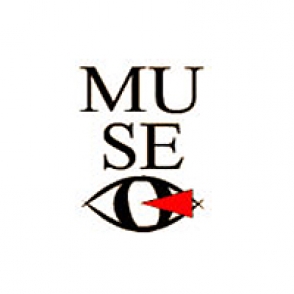National Fine Arts Museum
The objective of this article is to provide a virtual dialogue about the when, where and why of the educational role of museums; so, if you are interested in it, let’s begin the debate.
It might be worth going back to the origin of museums. These cultural institutions are said to have two origins, one related to the content and the other to the continent; that is, where the term came from.
On the first case, it’s worth recalling that one of the functions of museums is to collect and preserve the cultural heritage and tradition of a society, of a period, of a space; but only those that are indicative of singular values and represent a milestone. Those pieces or items must have a historical, artistic, patriotic, biological, environmental and symbolic value; be it a monument, an architectural work, a personality, and many times a collection of “something” or owned by someone.
If we make a time travel back to the last years of the primitive societies, we would probably see a change from a fair, equitable distribution of wealth to a more privileged distribution in the hands of those circles of power that were beginning to amass huge fortunes. It’s the start of a society divided into social classes. Hence, it would be the threshold of the slave society and with it, the consolidation, as a social phenomenon, of a practice known today as collecting.
Like any social or natural process, this human activity evolved and will continue to be developing. A process involving an ever increasing accumulation of objects was thus beginning at the time. More wars, more conquests, more military figures, more treasures, more power, more space seized at temples, palaces followed year after year. This phenomenon will undoubtedly call for the need to create, one way or another, a different form or system to treasure what was being conquered. That new institution would be called museum.
But, why museum? Where did that term come from? According to scholars, the term originated from the word Mouseion, which was the name given to the building built by Ptolemy I Soter, Alexander the Great’s general. Alexander had dreamed about turning Alexandria into the world’s largest intellectual hub ever known by then. He died in 323 B.C. and his general built the famous library that would be later on chiefly enlarged by his first son Ptolemy II Philadelphus. This event would mark the continuation of a new dynasty: the Ptolemaic dynasty (305 B.C. - 30 B.C.).
The term Mouseion has been associated with different designations. For some people, Mouseion was the entire building founded by Ptolemy I. Others identify it as a museum at the Alexandria Library, while a third group says that the term was used to refer to a kind of university in Egypt; a teaching center, maybe as an allusion to Alexander’s dream.
According to Wikipedia, “scholars and historians from the 20th and 21st centuries have kept on saying that a retrospective utopia has grown around Alexandria’s Library. The library did existed but there is very little written evidence of its existence. Hundreds of assertions have been made being contradictory, doubtful or simply false.”
Yet, the idea of a study was present in any of them, either implicit or explicitly. The educational element was also contained in manuscripts, as wells as in collections of curiosities, in gardens, zoos…
Collecting also reveals its educative nature. Ever since slavery, the ruling class began to have objects on display, with educative purposes, because education has always been class-oriented. The ¨ruling sectors¨ teach what they think that must be taught. Back then, enemies, adversaries and the ¨people¨ in general were intimidated by showing who had the power.
Museums have changed a lot ever since, but their educational role has been preserved. With the Italian Renaissance and the arrival of the 18th century and the Age of Enlightenment, major events would follow along that process for making that phenomenon more democratic; hence increasing its educational character.
The first public museum was built in that period, the Ashmolean Museum (1683). National museums would be built, the Louvre Museum (1793) would have great impact, the concept of people as beneficiary of heritage would appear during the Age of Enlightenment, and the conditions were created by the second half of the 20th century to identify museology as a science. The movement called “the new museology” would appear later on that century.
The educational role of museums had reached its highest point by that time, and museums were no longer seen as a place with valuable objects.
Historians, artists, cultural figures, museum keepers and international organizations have voiced the need to further develop the educational function of museums. However, this has failed to be properly understood by advisors and decision-makers, as corroborated by the little support given to these institutions, chiefly small city museums. Yet, getting familiar with those points of view, their importance and diversity is worthy of another article. Let’s then have a new virtual dialogue in our next encounter.
Translation: Dayamí Interián (Cubarte)


Deje un comentario